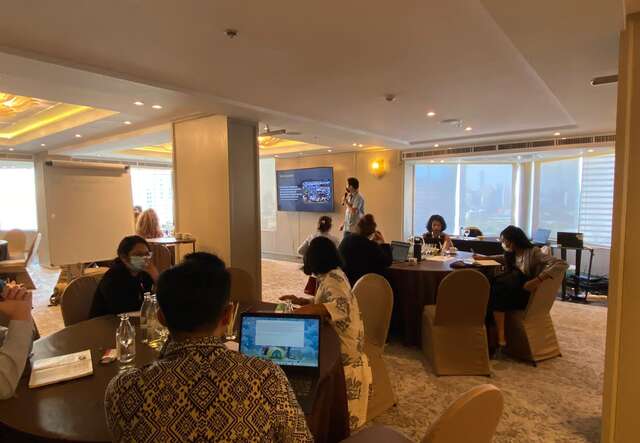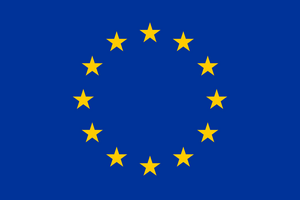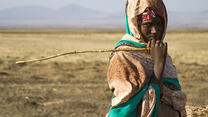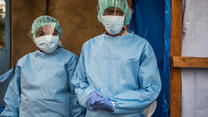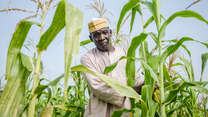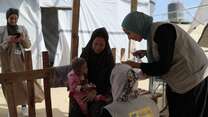Unrelenting conflict areas across Southeast Asia are prone to high disaster risks which worsens already prominent protection risks for civilians, especially during the outbreak of climate disasters and political unrest. In order to address the growing protection needs of human lives the IRC, with funding from the European Union (EU), has completed a 30-month Action that seeks to facilitate local agents and risk reduction infrastructures in preparing for disaster in order to bolster protection responses to save vulnerable affected communities—especially the elderly, women, and children. The regions addressed include the “deep south” provinces in Thailand, Mindanao in the Philippines, and Indonesia’s Papua province. We interviewed PPSEA’s project director Roger Cabiles to better understand the concept, aims, and results of its implementation.
Portrait of Roger Cabiles, IRC Project Director - Preparedness for Protection in Asia.
Photo: Agnès Tiberghien for the IRC
Q. What does “disaster” mean to you in your experience within the PPSEA project?
R: For us in Southeast Asia, disaster preparedness for protection is focused on specific area needs. We consider both extreme weather events and human-induced disasters since Southeast Asia is one of the regions in the world most prone to extreme weather events –including typhoons, floods, earthquakes—which further complicates the negative impacts of climate change. We’ve experienced storms and typhoons getting stronger and more frequent. In the Philippines, typhoons are already a regular occurrence but the frequency and magnitude seems to be increasing. Atop such natural disasters exacerbated by climate change, Southeast Asia is also affected by internal human-induced disasters such as armed conflict. And so we implement our project activities in areas where these kinds of disasters are present. There’s a long history of armed struggle in the Philippines due to separatist movements. In Thailand as well, just last year, there were significant bombings in the deep south region. The Papua province of Indonesia is also experiencing a lot of conflict incidents. On the whole, “disaster” for us is when a calamity negatively affects the lives and livelihoods of people as well as whole communities.
Q. What is “disaster preparedness”?
R: For us, it is anticipating and preparing for the impact of disasters through a set of actions and measures by individuals, communities and authorities. Having experienced a lot of disasters in the Philippines we have seen a lot of the aftermath: human casualties, and livelihoods and infrastructure ruined. In recent years, we've learnt from these experiences and prepared in advance. We live in a 'new normal' where disasters are already part of our lives, and we must adapt to live with it. This entails ensuring that local and national agencies work together to, for example, to prepare and pre-position relief supplies, ensure that emergency plans are in place in the event of a disaster, and inform communities of the location of evacuation centres. We’ve learned from our experiences before when we weren’t too aware of what to do and what to know when a disaster is about to happen. Disaster preparedness also includes ensuring knowledge about disaster is circulated and communities and authorities are capacitated with this knowledge so that when a disaster strikes, the systems and structures are in place to mitigate the after-effects.
Q. How is the EU equipped to help with disaster preparedness and risk prevention despite not having to face the immediate impacts of climate change in the same way as Southeast Asia?
R: Firstly, for those of us working in the development sector in developing countries, the EU has provided a lot of funding to support our activities. Secondly, a lot of the knowledge and innovation in disaster preparedness and risk prevention comes from EU-funded research into emergency response actions and faster emergency communication technologies that we can incorporate into our strategies on the ground. Thirdly, they provide a vital platform for engagement with and dialogue between different countries and organizations which ensures broader perspectives and an exchange of learning and experiences. The EU puts a premium on evidence-based solutions and using a lens that follows the scientific process, which is crucial in disaster preparedness.
Roger Cabiles, IRC Project Director - Preparedness for Protection in Asia, participates to the European Humanitarian Forum in Brussels to highlight how to better measure the impact of protection activities after onset of a crisis.
Photo: Agnès Tiberghien for the IRC
Q. What are “protection-focused” activities and how are they different from other disaster preventative activities?
R: “Protection-focused” activities are at the heart of preventive protection because when a disaster happens we try, foremost, to save lives. But for Preparedness for Protection we put value in ensuring that protection is central to humanitarian responses at large. So protection means that the rights of individuals—the right to life, protection from violence, especially for sexual and gender based violence (GBV)—are protected regardless of an extreme weather event or armed conflict occurring. Because of research, we have observed data reports that conclude there is more sexual and gender-based violence in evacuation centres. As a result when we are preparing for disasters, for example, we ensure that the local government units are aware of the mechanisms to prevent sexual abuse in evacuation centres. We have to ensure that lives are protected and everyone, especially vulnerable people such as the elderly, women, and children, are safe and secure wherever they are, most especially when there is a humanitarian emergency.
Q. How is disaster preparedness important in the Southeast Asian context?
R: In Southeast Asia disaster preparedness, or anticipating disasters, is not a matter of if the disaster will come, just a matter of when it will come, and how ready we are to survive and cope with it when it does.
Q. What is “disaster risk reduction” in terms of the scale of disasters and what is at stake?
R: In the context of disasters becoming more destructive, the work is not just on responding or ensuring that post-disaster strategies are in place but also reducing risks before disaster happens at all. It can include ensuring that the infrastructure is resilient enough, for example, for typhoons of category 4 or 5. At the national level, it is ensuring that policies on when to use calamity funds are in place, or how much power is given to a local chief executive and authorities when it comes to making this decision. We assist local government units and agencies in ensuring that disaster risk reduction happens in management planning and that we are aligned with the standards set by the different humanitarian agencies. It’s a matter ensuring that it is regularly updated and monitored for implementation. So we try to assist our partnered local government units in all the stages—from planning to monitoring to implementation all the way to assessment of effectiveness. Specific to Preparedness for Protection, we try to ensure that protection risks are properly considered in these plans and policies, and that protection interventions are put in place together with representative voices from the communities and vulnerable sectors.
Q. What is Airbel and how does it help you achieve your goals for PPSEA?
R: Airbel is the research and innovation division of the IRC. It assisted us in developing a methodology to measure the impact of protection-focused disaster risk reduction activities.We already have a lot of research being carried out focusing on disaster preparedness but not enough on protection, so Airbel is helping us bridge that gap. If we know the effectiveness of our activities we will be more informed about where to channel funding.
Q. Can you give an example of when it was possible to anticipate a disaster and how that helped protect people?
R: In the Philippines, now that we have the technology, we can anticipate when a disaster strikes—within 72 hours before it strikes we can set in motion mechanisms in place to protect people, livelihoods, and homes. Last October there were strong typhoons that affected a lot of the communities we work with in Mindanao and many municipalities were flooded. When we visited our partner local government units, they were really appreciative of the activities we did with them through Preparedness for Protection. Because of the updated disaster risk reduction and management planning they were able to respond quickly enough to save lives and protect livelihoods. It just proves that you can prepare for and anticipate disaster as long as you transfer the knowledge to the frontliners who are responding when it strikes.
With an example in Thailand: we are working in the deep South where there is an increase in domestic violence in homes. The women in the communities are not too trusting of government or official reporting agencies that they should report to. We were able to identify that gap and are working with a local women's organisation to capacitate them on how to provide counseling services to survivors and how to refer to official agencies. For this we build the trust of the communities so they know there are people they can rely on who can help them. In Thailand we partnered with a university to ensure that standards are met and by doing this we are also helping their social work program for training social workers in responding to cases of violence.
Bangkok, December 2022 - Roger Cabiles explain to fellow humanitarian colleagues at Regional Humanitarian Partnership Week about the gap in measuring the impact of protection-related interventions after a crisis.
Q. How does PPSEA provide countries with the tools to help themselves build and strengthen their capacities for disaster risk reduction?
R: We do a lot of capacity building activities with our local partners. We facilitate meaningful exchange of risk reducing tools to various communities. We ensure that these tools are contextualized and adapted to specific communities in terms of language, religion and culture. If the methods are not disrespectful to their culture or religion they will be able to continuously use them and we can ensure their sustainability. We also provide grants to fund local organisations because they are best equipped to identify the areas where protection or disaster preparedness are most needed for themselves. It’s really about working closely together and treating communities as partners and not just as beneficiaries.
We have a set of humanitarian principles which constitute our ethical practice and treating each person with respect regardless of gender, culture, or beliefs. We try to contextualise how we engage with people and communities based on the principle of humanity—every life counts. So, it's important for us to be culturally sensitive. Neutrality is another important principle. Since we work with communities often in fragile states with ongoing or post-conflict environments we try to ensure that government agencies that are non-state actors see us not taking particular political sides.
We are thankful to the European Union for not forgetting the crisis in Southeast Asia where communities are largely affected by extreme weather events and human-induced disasters. Preparedness for Protection needs investment and we are grateful for this support and hope to continue collaborating with them in building the resilience of communities and bringing attention to the protection needs especially during humanitarian emergencies.
About our work with the European Union
